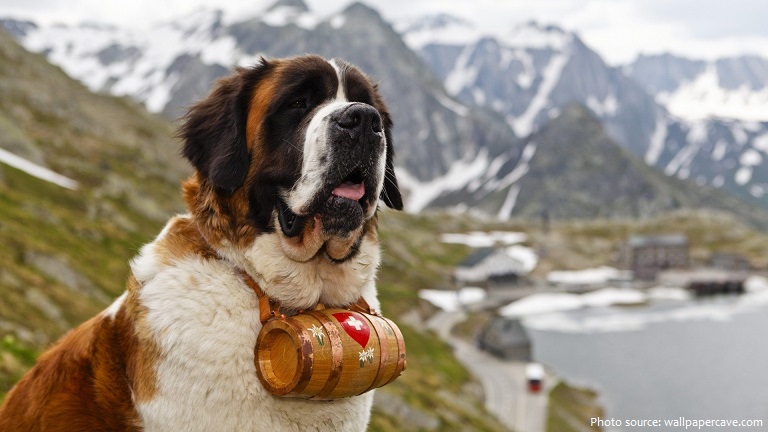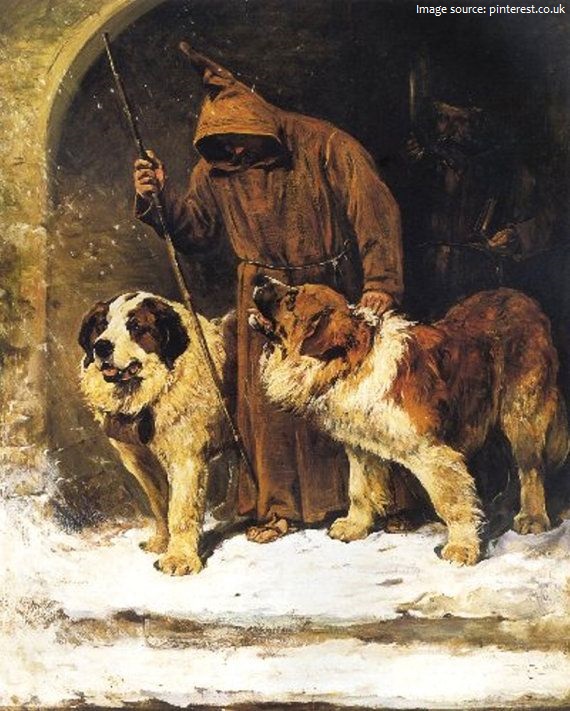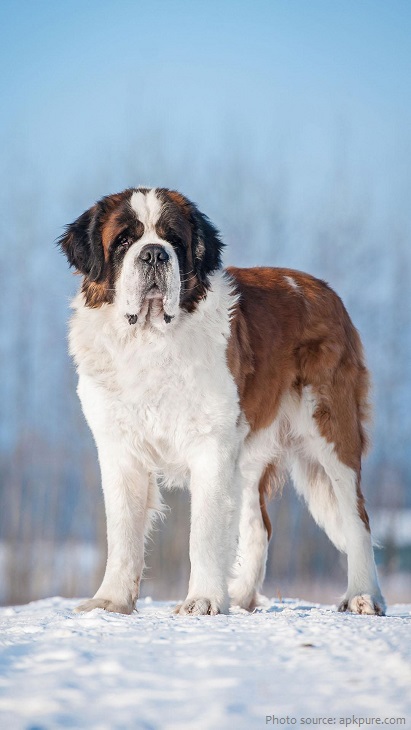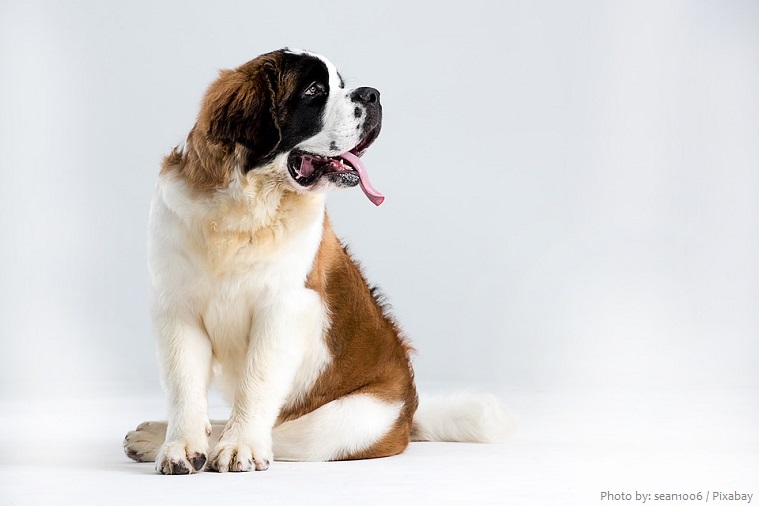The St. Bernard or St Bernard is a breed of very large dog.
The name “St. Bernard” originates from the Great St. Bernard Hospice, a traveler’s hospice on the often treacherous Great St. Bernard Pass in the Western Alps, between Switzerland and Italy.
In the 11th century, monks founded a hospice as a refuge for travellers and pilgrims on the 2469-metre (8,100-foot)-high Great Saint Bernard Pass.
Sometime between 1660 and 1670, the monks at Great St. Bernard Hospice acquired their first St. Bernards descendants of the mastiff style Asiatic dogs brought over by the Romans, to serve as their watchdogs and companions.
The breed has become famous through tales of alpine rescues, as well as for its enormous size.
The average lifespan for a St. Bernard is about 8 to 10 years.
The St. Bernard is a giant dog. The weight of the breed is between 65 and 120 kg (140 and 260 lb) or more, and the approximate height at the withers is 70 to 90 cm (28 to 35 in).
The coat can be either smooth or rough – the smooth coat being close and flat while the rough is dense, flat, and more profuse around the neck and legs. The colour is typically a red shade with white, or a mahogany brindle with white. Black shading is usually found on the face and ears. Eyes are usually brown, but sometimes can be icy blue, and should have naturally tight lids, with haws only slightly visible. The tail is long and heavy, hanging high.
Known as a classic example of a gentle giant, the Saint Bernard is calm, patient and sweet with adults, and especially children.
The patient and docile St. Bernard does need plenty of space because of his size, and is therefore not suited to those in apartments.
The Saint Bernard was bred to be a working companion and to this day the St. Bernard lives to please its master and is an amiable yet hard worker.
The most famous St. Bernard to save people at the pass was Barry (1800–1814), who reportedly saved somewhere between 40 and 100 lives. There is a monument to Barry in the Cimetière des Chiens, and his body was preserved in the Natural History Museum in Berne.
Famously, it was believed that they carried a small barrel of brandy around their neck to revive frozen mountaineers. There is no historical evidence that they did actually carry this brandy, although the monks at the St. Bernard Hospice keep some barrels around for photographs with tourists.
The Swiss St. Bernard Club was founded in Basel on 15 March 1884. The St. Bernard was the very first breed entered into the Swiss Stud Book in 1884, and the breed standard was finally approved in 1888. Since then, the breed has been a Swiss national dog.
An 1895 New York Times report mentions a St. Bernard named Major F. measuring 2.59 meters (8 feet 6 inches) in length, who, if the claims are true, would be the longest dog in history. Another St. Bernard named Benedictine V Schwarzwald Hof (Pierson, Michigan, USA) also reached 143 kilograms (315 pounds), which earned a place in the 1981 edition of the Guinness Book of World Records.
St. Bernard dogs are no longer used for Alpine rescues, the last recorded instance of which was in 1955.
The 1992 comedy film Beethoven features a friendly but troublesome 90 kilograms (200-pound) long-haired St. Bernard and, in later sequels, his mate and their brood of unruly pups.
The collective name for a large group of Saint Bernards is a “floof”.






